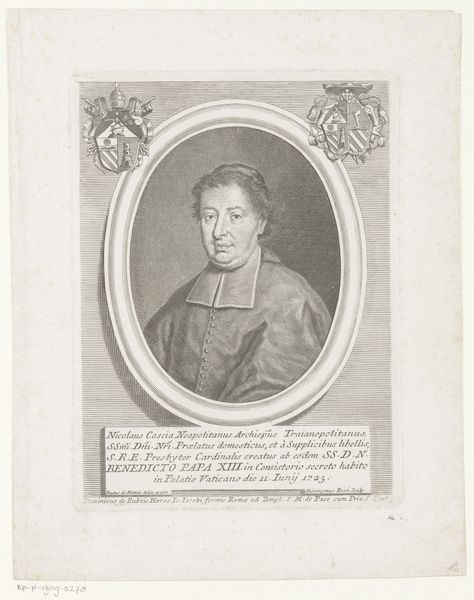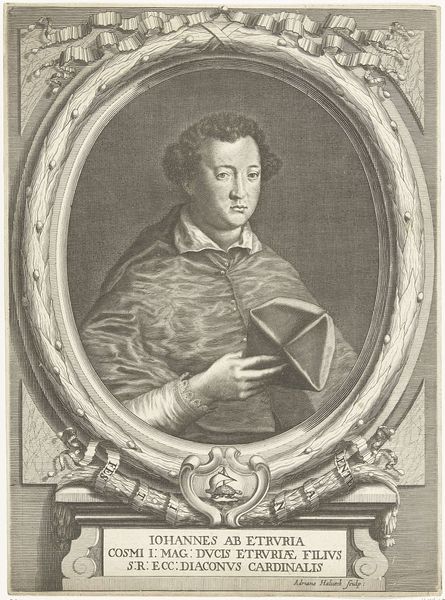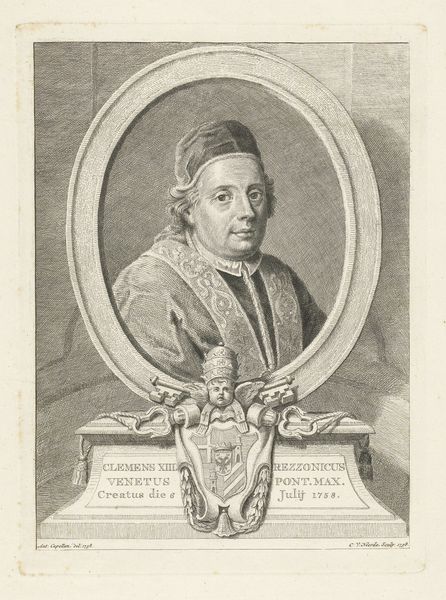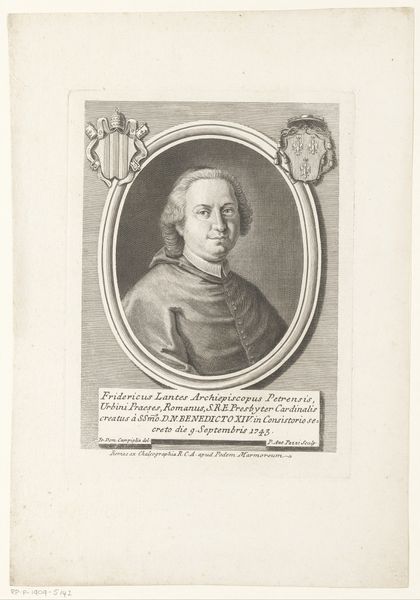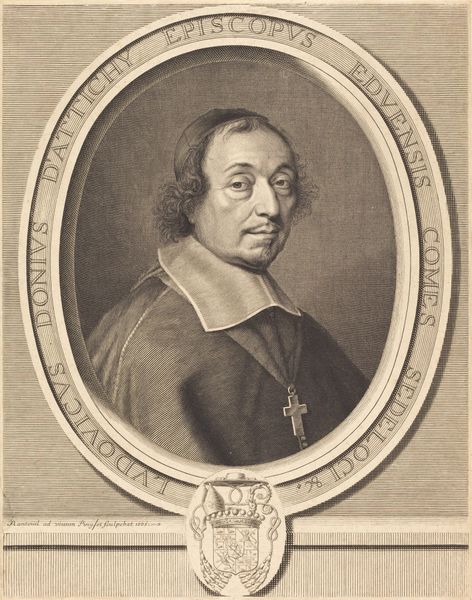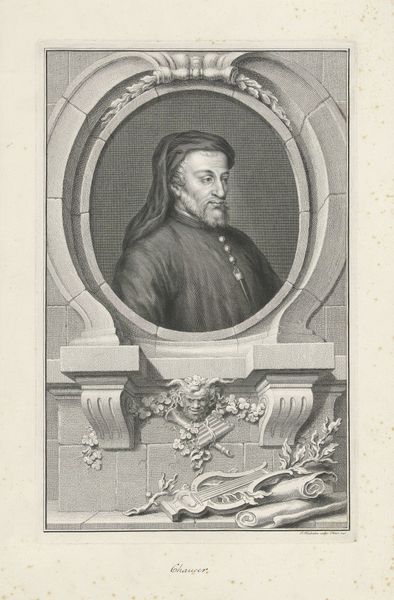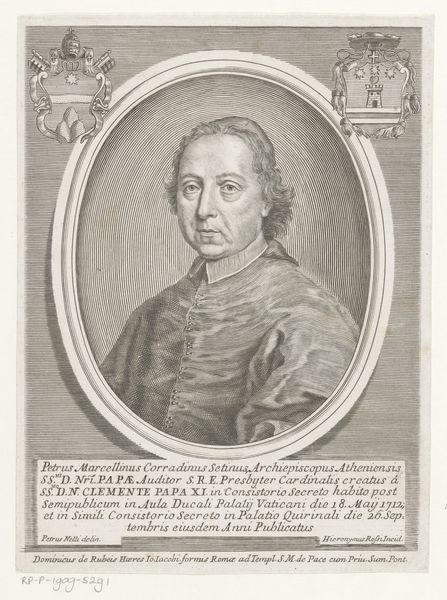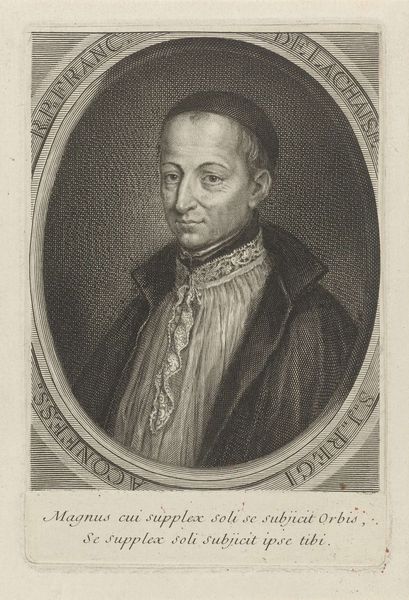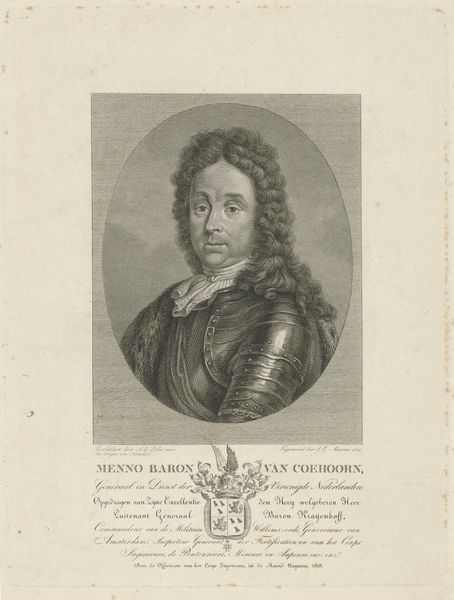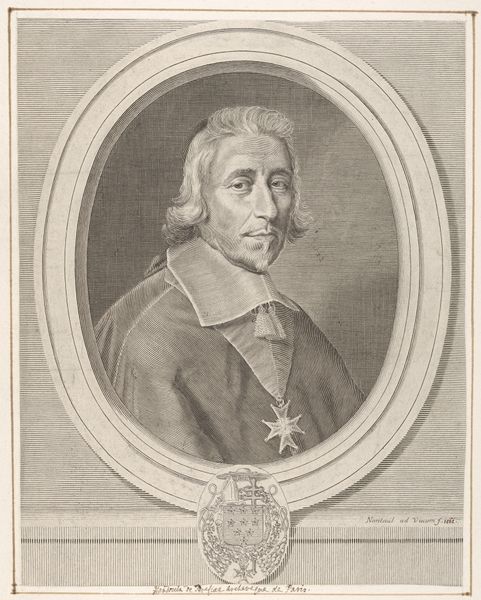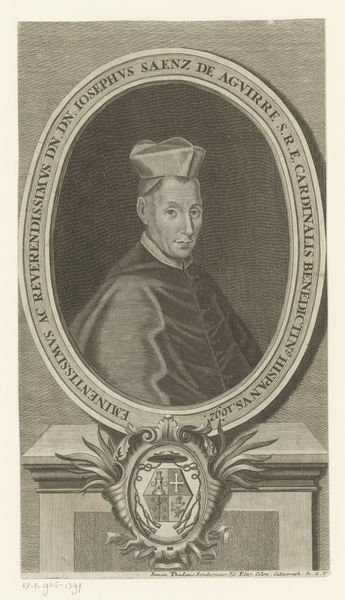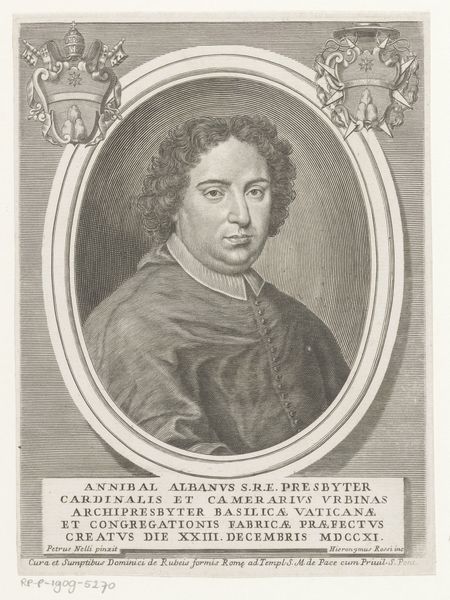
engraving
#
portrait
#
baroque
#
history-painting
#
academic-art
#
engraving
Dimensions: height 219 mm, width 165 mm
Copyright: Rijks Museum: Open Domain
Curator: Welcome. Today we’re examining a work by Girolamo (II) Rossi, entitled "Portret van geestelijke Niccolò Coscia," which roughly translates to "Portrait of clergyman Niccolò Coscia." It’s an engraving dating sometime between 1717 and 1762, and it’s held at the Rijksmuseum. Editor: My first impression is how austere it seems. The rendering of Niccolò Coscia feels formal and somewhat imposing, a representation of power solidified. Curator: Indeed. Consider that prints like this one functioned within a complex system of patronage and public image-making. Ecclesiastical figures like Coscia used portraiture to project authority. Editor: It is clear that it intends to create the presence of the religious establishment. Even the oval frame with inscribed Latin around the subject’s head serves to set apart the ecclesiastic stature of Coscia from his temporal placement in society. I also observe an almost performative nature to Baroque portraiture that further separates it from genuine life. Curator: Precisely. Also note that Coscia's role as a cardinal Archbishop of Traianopoli under Pope Benedict XIII connects him directly to the immense power structures of the time. This portrait underscores his importance within those hierarchies. The artist, Rossi, also held an important position. Editor: Absolutely, these depictions serve a propaganda purpose, cementing hierarchies and establishing a visual language of power and piety, albeit filtered and presented in a certain way. Did Coscia have any scandals? I can not avoid thinking how portraiture can either gloss over troubling legacies, or, in retrospect, stand as indictments of systemic issues. Curator: That's an excellent point. In fact, Coscia was embroiled in controversies, including accusations of financial mismanagement. The sumptuousness and the gravitas intended here now seem tinged with a troubling irony given later assessments of his life. Editor: This really proves how crucial context is when understanding visual representation, and the role images can play to support those in power. Curator: Understanding these social dimensions reveals the layered and at times conflicting, meanings embedded within seemingly straightforward portraits of historical figures. Editor: Reflecting on this, it makes me question how we grapple with the complicated legacy of historical figures immortalized in artworks. It prompts crucial discussions about power, representation, and the narratives we choose to perpetuate.
Comments
No comments
Be the first to comment and join the conversation on the ultimate creative platform.
